Content needs to be fresh. Nobody loves reading boring fluff consistently and has fun while at it. So, if you keep writing and churning out low-quality content, your visitors may just find another blog or brand to get quality content from.
As you may already know, when your clients or readers begin to lose interest in the content you’re putting out, your organic traffic begins to suffer. So, here’s a question to consider:
How powerful is your content in pulling organic visits into your website?
If your answer is “not powerful enough” then this post is for you. Even if you create content that’s doing great organically, there’s still room for improvement.
Whether you’re a B2C or B2B content marketer, creating quality content doesn’t just increase your search engine visits but it also helps establish your personal brand.
It’s one thing to boost traffic organically but another thing to get visitors to engage with your content. When you write quality content that visitors want to share on social media, you’ll be rewarded by search engines with top rankings.
So what type of content do you create when you want to drive organic visits to your site?
Below are 8 types of content that have been proven to increase website visibility organically:
1. Opinion or Thought Leadership Posts
People love to connect with people, not brands and when someone has experienced some level of success in what they do, readers look forward to their content.
For example, Forbes publishes more 7,000 posts monthly and a great number of these posts are produced by thought leaders in different fields.
Keep in mind that your visitors are looking for content from experts who have a proven track record.
Here are some of the trends of engagement due to contributions on the Forbes website:
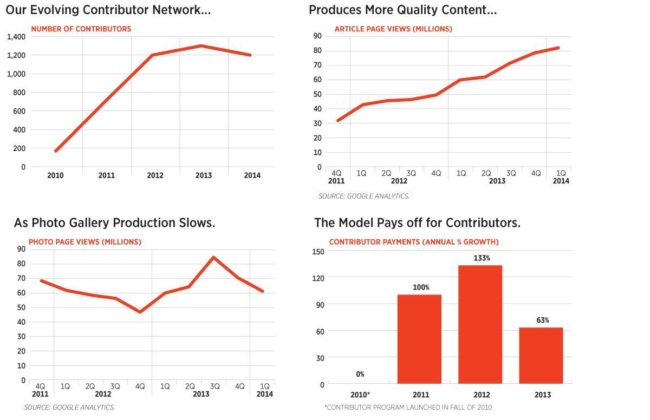
A survey carried out by the Bloom Group showed that 93% of web users agree that top-notch thought leadership content enhances their impression of a SEO company.
The competition on the web these days is fierce and as more content is being produced daily, it’s easy for readers to feel overwhelmed.
There is a lot of information available and thought leadership content helps visitors know what information is worth engaging with.
It’s important to state though that regardless of anyone’s popularity or expertise, Google won’t just push organic traffic their way. It must be done right.
Quality thought leadership content shields your readers from baseless fluff and offers practical advice and tips.
What is thought leadership?
Thought leadership is the inspiration of your readers through proven innovative concepts and energizing people with the drive to convert their thoughts into reality by replicating the success of the thought leader.
This type of content isn’t for everyone though. If you have no experience as a content marketer or blogger, no solid web marketing skills, or you haven’t carried our surveys or done any market research, then you shouldn’t attempt this type of content for now.
Thought leadership posts are only regarded as quality content when they are created by individuals who have had some degree of failure or success in their field and are now aware of the right steps to take.
To produce this kind of content you need to invest in education. Take classes to enhance your knowledge on email list building, search engine optimization, blogging, conversions, and so on.
After you’ve improved your marketing skills, then start creating this type of content. You already have a following that trusts your suggestions in a field, so show them what you know.
2. How-To Posts
How-to Posts are arguably the most popular type of content on the web.
They are very easy to create and possess an immense value because most people go to search engines looking for advice.
A great example is eHow.com:

The magic in this type of content is in making it rich and full of useful information. Otherwise, it’s a complete waste of your time.
Here are some basic steps, recommended by Digital Marketing Agency, to follow when Creating ‘How-to’ Content:
i). Have a Specific Topic
Be specific about the topic you want to write on. If for example, you pick health, narrow it down to a specific aspect of the health industry. Maybe you want to write about arthritis, panic attacks, the benefits of CBD, or share a keto recipe; be clear in what you are trying to convey.
If it’s on SEO services, what should you focus on exactly?
Keyword research, long content, or how to build links? Pick a specific topic you know you can easily write about. It’s okay if you are not passionate about it, but you must be knowledgeable about it.
ii). Provide Solutions to Your Audience’s Problems
What do your users struggle with? Maybe they are getting hung up on how to properly install Google Analytics tracking code on their sites and they found that you are a digital media expert who specializes in this. Your how-to article should answer your web visitor’s questions.
iii). Study
Spend quality time researching your topic. Get all your data, visuals and facts for your content to create an engaging, useful article.
iv). Outline Your Content Before Writing
This is an effective tip for speed writing. To do this, create a structure for your posts and write within the structure. It will help you to keep necessary flow and your visitors on track by clearly outlining the steps they should take to help solve their problem.
Quality how-to content has the potential to go viral as well as give you an insane boost in your organic traffic. As Brian Clark stated, “these types of content are intensely sought after.”
If you want to see your posts go viral, focus on the value they offer. If you give value to your audience, they will happily share your content.
During the creation process of your how-to content, think about personalizing the article. Start by tweaking your headline with “I” instead of “to.” So, it’d be like: How I Lost Weight in Two Weeks instead of How to Lose Weight in Two Weeks.
This will present your article as a successful case study to your visitors and position yourself as an authority on the topic, increasing the chance that they will engage with it after seeing your first-hand results.
Finally, ensure that whatever “how-to” content you produce is fun to read. If it isn’t, you’ll lose the reader’s interest.
3. Infographics
A study conducted by Unbounce in 2010 showed that within years, organic searches using infographics leaped to 800%.
This shows how effective they are and that you should utilize them to create high-quality content that improves your search traffic.

Today’s world is constantly in search of data, now more than ever. Having relevant and necessary data within your content will pull the search engine rankings in your direction.
A recent marketing study by the Wharton School of Business shows that people can recall 80% of the things they do and see and only 20% of the things they read.
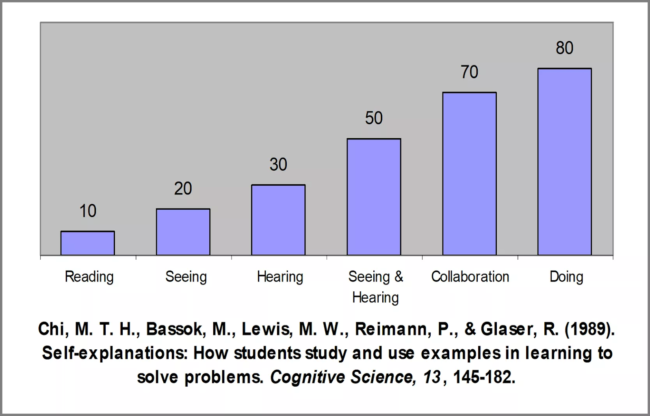
Source: Work-Learning Research
This is quite an incredible statistic that you can use to create an engaging audience. If people can remember what they saw on your site, they’ll always refer to it when the need arises.
Infographics help a great deal in summarizing content by utilizing graphical representations and relevant data.
They make it fun for readers to go through and share because its combining interesting visuals and useful information.
Aside from infographics being useful to the reader, a lot of people like to share this type of content on social media.
This is because about 90% of what our brain processes is visual, so it makes sense that 40% of people prefer visual information to plain text.
Infographics can act as a long-term solution to organic traffic which means they may not cause an instant boost in results, but over time the results are amazing.
When using this infographic, as a SEO services strategy to create appealing content, you must integrate an infographic into your written content- the visual should complement the text. This allows Google to rank your content page and send top quality organic visits to your site because you are acknowledging a balance between text and visuals.
It can be expensive to incorporate infographics, so make sure they are valuable and a solid tool for creating conversions or generating leads.
4. Book Reviews
A lot of people love reading books so it could be helpful to create content that are actually book reviews on topics related to your business.
According to a survey by Pew Internet, 76% of adult Americans said they read at least one book a year.
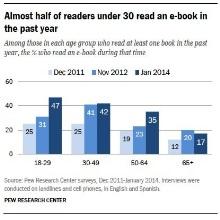
Therefore, book reviews are a way of stating your take on a book as well as discussing it and sharing your expertise on the topic. The aim of this type of content is to help your readers choose the best books related to your industry rather than spending their hard-earned money on a poor written novel that could be a waste of their time.
Successful bloggers and content marketers know how valuable honest book reviews are. And did you know that 77% of individuals spend time reading product reviews before purchasing any item online? This is because nobody wants to spend money on something that isn’t valuable.
Before you buy a book, you probably look at the recommendations of someone you admire or an expert, whether it’s a new release from a popular author or if it’s something published on a credible platform.
Authors know how much impact book reviews have on people and are always trying to get more eyes on their pages. Without reviews, book sales would be bad since so many people make their purchasing decisions based on the reviews of other customers.
A study by Zendesk shows how 90% of a test group of web users say that positive online reviews influenced their decision to buy a product, while 86% say negative reviews also influenced them to make decisions on an item.
This shows the importance of the pros and cons when you write a review:
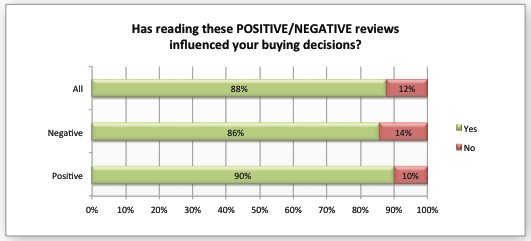
Authors are always on the lookout for solid opportunities to spread the word about their books. So, reviewing a book in a certain niche can easily create profitable industry connections back to you.
So why are book reviews a great way to create content that attracts organic visitors?
i). Word of Mouth Promotions
When people perceive your content as valuable, they unconsciously talk about it to their friends, family members, or fans.
So, by offering a preview into a book, a lot of people may want to learn more about the book or are interested into learning more about what it has to offer.
ii). Domino Effect
We tend to do what we see other people do, just like a set of falling domino chips.
When you write an unbiased review about a book, highlighting the pros and cons, you’ll influence people to purchase it based on what you say about it.
But just like other types of content, the headline of your book review must be compelling. A captivating headline is what draws a reader’s attention to your post in the first place.
Book reviews are one of the best types of content that drive free top-quality search traffic to your website due to its unbiased approach.
5. Product Tutorials or Reviews
Product reviews are quite similar to book reviews, except that product reviews can embrace various aspects like software, ideas, services, or even physical items.
Consumers are always searching for quality reviews on any product before they purchase it.
According to Bright Local, 48% of online buyers stated they read up to 6 reviews before they felt confident enough to trust a brand.
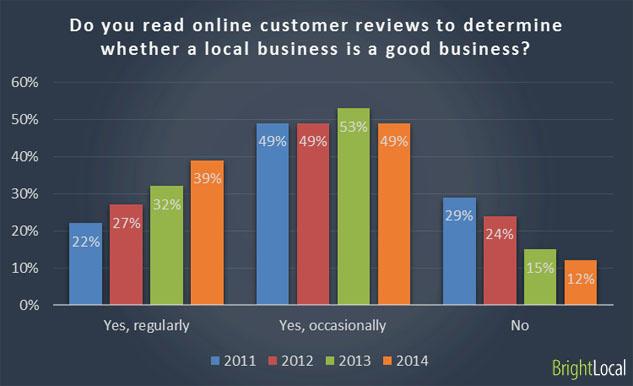
The most important rule is to be honest and be clear about the pros and cons of the product. If you’ve tested or used the product you’re reviewing, you are in a better position to write an authoritative review about it.
However, as good as product reviews are in driving organic traffic, it’s a very saturated market of driving traffic so you need to be creative about it.
Instead of just publishing a stereotypical product review, whip up tutorials to demonstrate exactly how the product works.
If the tutorial or review you serve to your visitors is easy to understand and implement, you will attract quality organic traffic that boosts income. This is also an excellent way to get targeted leads to an affiliate program.
When you create product review content, you need to possess the mentality of a helper. Ignore the money. If others learn from you, they’ll develop interest and trust in you, which will eventually lead to sales.
6. Authoritative Link Resources
A resource can be defined as a source of aid which provides benefits to its user. This is exactly what a link resource does for your readers.
It offers readers easy access to useful information to further elaborate your point by using other authoritative sources.
Link resources make valuable information easily accessible to your audience when it’s needed.
Do you know that most of the topics you use to create content have most likely already been written on by experts and other content creators? For this reason, content can easily be curated.
Many knowledgeable marketers curate a major bulk of their posts, which are then able to reach the demand for high-quality information.
As a matter of fact, Curata’s survey showed that 76% of Internet marketers utilize curated content. Since a lot of high-quality posts, videos and statistics exist about most topics, you can find and share them with your readers.
This drives organic visits to your page because of the immense pool of valuable information on it.
People then realize that they can easily access a lot of valuable information on your website and directly search for it to get the information they need.
7. Guest Posts
Guest posts are one of the best types of content for generating search traffic, especially when it’s published on a trusted blog with strong domain authority.
When you create content that’s helpful enough to be published by an authoritative website, you give your personal brand a huge boost as it opens you up to a broader audience range. And when they love what you served them on an authoritative site, they start searching for more of what you’ve created.
In fact, you can drastically improve your organic visibility with a single compelling guest post.
It’s vital to mention, though, that like everything else you do to improve your search traffic, guest blogging must be done the right way. Having a guest post on an unknown site would be a waste of time.
You need to pitch top blogs and websites in your industry and when they accept your proposal, create irresistible guest posts which they can feature on their homepage. Then hopefully that will lead to a lot of direct and organic traffic back to your website.
8. Content with Relevant Keywords
The foundation of any content that seeks to drive organic traffic thrives on the effective use of keywords. Therefore, making sure your content is created around relevant keywords is quite vital to your personal brand.
Below are some tips to help you in producing relevant keyword-rich content:
i). Use Primary Keywords
Use helpful tools such as KeywoodTool.io or Google Keyword Planner to research relevant and high volume keywords.
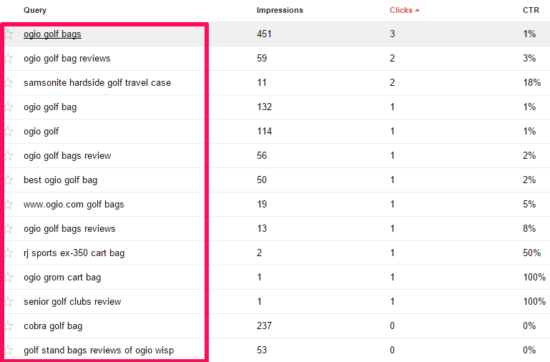
These will most likely be the main keywords your site is already aiming at. You can use them to help structure your content.
ii). Long-tail keywords
Long-tail keywords are also a great way to outline the main chunk of your content.
You can use specific long-tail keywords as your subheadings or headings. And to even boost usage of a keyword more, ensure you cover keyword-related content in the body of your posts that users search for.

Tips to Implement in the Various Types of Content
Aside from just knowing the various kinds of content to create to drive organic content, you should also be aware of how to create this type of content.
Here are some tips to help you with the content creation process:
1. Validate Your Topic Ideas
All quality content germinates from an idea. But the question to ask is, how can you be sure that your ideas are the right fit for your audience?
The answer lies in validating the topic. The same rule goes into validating ideas for an online course or eBook.

Sure, you may have the best keywords needed for creating the content but finding the best topic that makes use of these keywords effectively is a different matter entirely.
You can validate your topics by using tools like Google Trends, Buzzsumo, Quora or Alltop.
This will help you to be certain that you aren’t just randomly dishing out content that no one cares about. It helps you focus on relevant and compelling content that your audience is searching for.
2. Know your Competition
Quality content is ‘good’ for a reason: because it supersedes the best of its kind out there!
However, you can never produce go-to content if you don’t know what resources already exist for such a topic, what they elaborate on, and if making something better is possible.
Fortunately, you can easily answer these questions by spying on your competition.
By knowing what sticks as quality content on a topic, you’ll be on the right track to produce even better content that your competitors can’t beat.
Even though competitor research is great, what you dish out to your audience must be completely unique as this will give your readers a fresh take on what they’ve been searching for.
Conclusion
Variety is the spice of life as they say and this applies to your content creation as well. Your audience needs to be exposed to a variety of top-notch posts for you to gain their respect and trust.
Producing these types of content requires dedication and hard work but the result is always worth it.
Your visitors get to acquire quality information on various topics and Google rewards you for providing such awesome content that satisfies its users.
Keep in mind that when you are creating content that meeting user satisfaction is the most goal. If you ignore the user, regardless of the type of content you create, Google will never reward you with increased search visibility.
Make sure that your posts are packed full of relevant information, stats, and visuals. In simple words, create compelling content.
That’s all you need to attract and increase your organic traffic!

